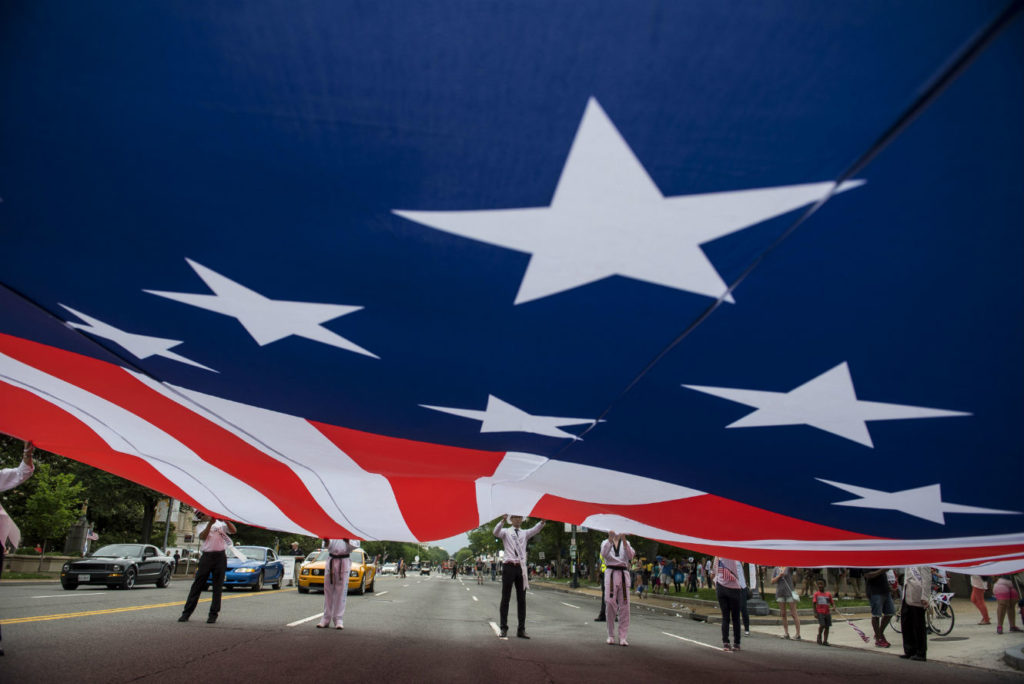Three Wartime Presidential Independence Day Speeches

To mark Independence Day this year, I have selected three speeches by U.S. presidents delivered to mark the holiday during times of war. All three draw on the themes of the Declaration of Independence to justify and celebrate the martial causes upon which our nation had embarked. Legacies from each of these wars remain with us today, haunting us at home, in Europe, and in Asia.
The first and shortest of the three speeches was delivered by President Abraham Lincoln three days after Independence Day in 1863. He was not just marking this holiday but the Union victory at Gettysburg just days prior. Lincoln jubilantly observed to laughter and applause that “on the fourth [of July] the enemies of the declaration that all men are created equal had to turn tail and run.” The 16th president gave a more somber remembrance of this great battle four months later.
The second speech was delivered by President Woodrow Wilson on July 4, 1918 to the U.S. diplomatic corps at Mount Vernon. On the morning that Wilson gave this speech at George Washington’s home, U.S. troops — in the form of four infantry companies — fought alongside Australian troops to win the Battle of Hamel. Wilson intoned:
We here in America believe our participation in this present war to be only the fruitage of what [the founders] planted. Our case differs from theirs only in this, that it is our inestimable privilege to concert with men out of every nation what shall make not only the liberties of America secure but the liberties of every other people as well.
Wilson laid out the four “great ends” of this war. Unfortunately, as Wilson was to discover, his European allies, the U.S. Senate, and the realities of power politics did not look upon three of these aims with much favor.
The third speech, and the longest, was delivered by President Harry S. Truman on July 4, 1951 in the shadow of the Washington Monument. Wilson’s dream of an international “organization of peace” had been realized in the form of the United Nations, but that organization was now at war on the Korean peninsula. In its first true test, the combat forces of 17 U.N. member states fought against those of North Korea, the People’s Republic of China, and the Soviet Union. In his speech, Truman compared the vision of the Declaration of Independence to that of the United Nations. He said that Soviet communism had taken the place of King George III to oppose “ideas of freedom and equality and self-government.” Truman insisted, “the American people are not afraid. We have taken our stand beside other free men, because we have known for 175 years that free men must stand together.”
He continued:
[T]he men who have fallen in the service of the United States during the past year have died for the same cause as those who fell at Bunker Hill and Gettysburg, in the Argonne forest and on the Normandy beaches. They died in order that “government of the people, by the people, for the people, shall not perish from the earth.” They have died in order that other men might have peace.
The day before Truman gave this speech, soldiers of the U.S. Army’s 45th Infantry Division had repulsed a Chinese assault on Old Baldy, or Hill 266, in Korea. But it was a battle that would last 10 months and eventually ended with Chinese troops in control of the hill, which is found today inside North Korea, less than half a mile from the border with South Korea.
These speeches tell us stories of hope and tragedy; of fighting men and women seeking to realize the promise that we are all born with certain unalienable rights and that governments should derive their powers from the consent of the governed. On this day marking the independence of the United States of America, as well as the values for which it stands, I hope all War on the Rocks readers, American and non-American alike, are celebrating in the manner that they see fit. And if you find some time today to read these speeches, all the better.
Ryan Evans is the founder and editor-in-chief of War on the Rocks.
Image: U.S. Army, Master Sgt. Michel Sauret

